

A guide to hiking & stargazing in Warrumbungle National Park
Man watching the sun set over Warrumbungle National Park




Destination NSW
If you’re a lover of the outdoors and gazing at the night sky, Warrumbungle National Park might be the best place you’ve never heard of. Located 500 kilometres northwest of Sydney, this natural wonderland is distinguished by its dramatic rock formations and majestic bushland, which you can explore via its fantastic hiking tracks. Warrumbungle National Park is also one of the best stargazing spots in Australia. Here, the pristine night sky above the volcanic landscape is unimpeded by artificial light, providing jaw-dropping views of the Milky Way, constellations and planets.
The star-spangled skies above Warrumbungle National Park are truly like no other in Australia. The park has been a refuge for stargazers and astronomers since the 1950s, and in 2016 became Australia’s first International Dark Sky Park. So, why is Warrumbungle National Park so great for stargazing? It all comes down to the region’s low humidity, high altitude and distance from light-polluting big cities. Regulations also control the lighting in nearby towns such as Coonabarabran – and thanks to the goodwill of residents, there’s been no increase in the sky-glow over the years.
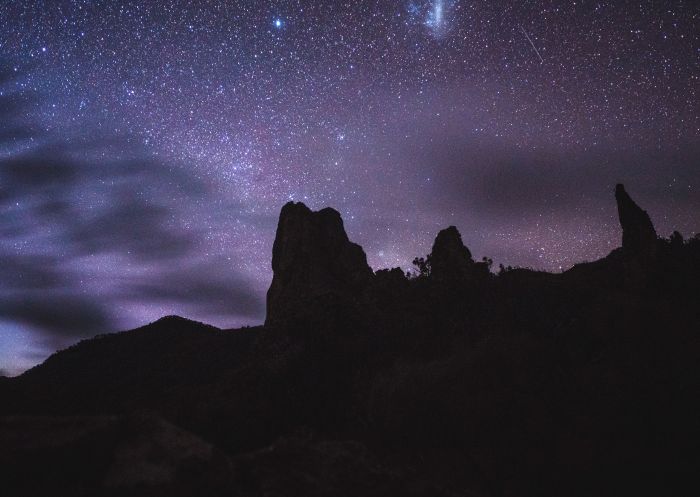
The night sky filled with bright stars over the Dark Sky Park, Warrumbungle National Park
Given Warrumbungle National Park’s reputation as a stargazing haven, it’s no surprise that there are two observatories nearby. On the edge of the park is Siding Spring Observatory – Australia’s premier optical and infrared astronomical observatory. With more than 20 telescopes – including the nation’s largest, the Anglo-Australian Telescope – the observatory is one of the few that can observe the entire Southern Hemisphere sky. From probing the depths of the universe in search of Dark Energy to exploring the Milky Way for unknown planets, Sidling Spring Observatory conducts ground-breaking research vital to our understanding of the cosmos. You can book a day tour of its Anglo-Australian Telescope several times a week, but as it’s a working research facility, it doesn’t open at night to the public.
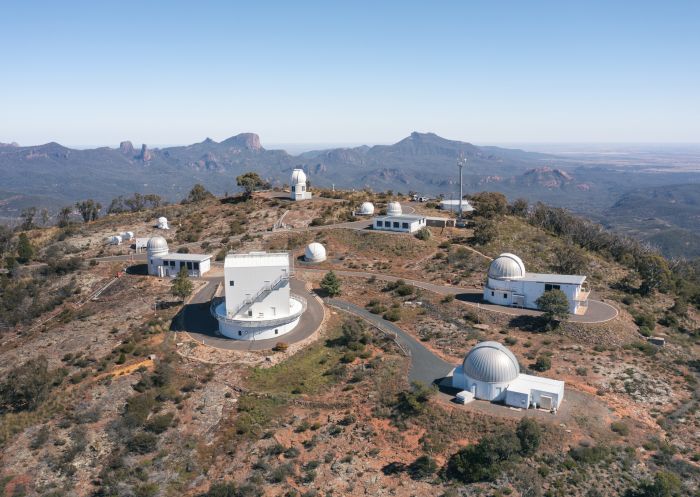
Siding Spring Observatory, Coonabarabran
Located just six kilometres east of Warrumbungle National Park is Milroy Observatory, home to the largest public-access telescope in the Southern Hemisphere. Here, you can join a 90-minute group stargazing session every night of the week, led by comet-discoverer Donna Burton. You’ll get to see planets, galaxies, nebulas and star clusters through the observatory’s outdoor telescopes and learn all about the wonders of the southern night sky from Donna.

Milroy Observatory, Coonabarabran
‘Warrumbungle’ is a Gamilaroi word meaning crooked mountains. And while hiking in Warrumbungle National Park, you’ll quickly understand how apt this name is. Formed over countless millennia by an extinct shield volcano, the jagged landscape of the Warrumbungles is a spectacular sight. And the best way to take in its striking sandstone formations, forested plains and deep gorges is to set off on one of Warrumbungle National Park’s hikes.
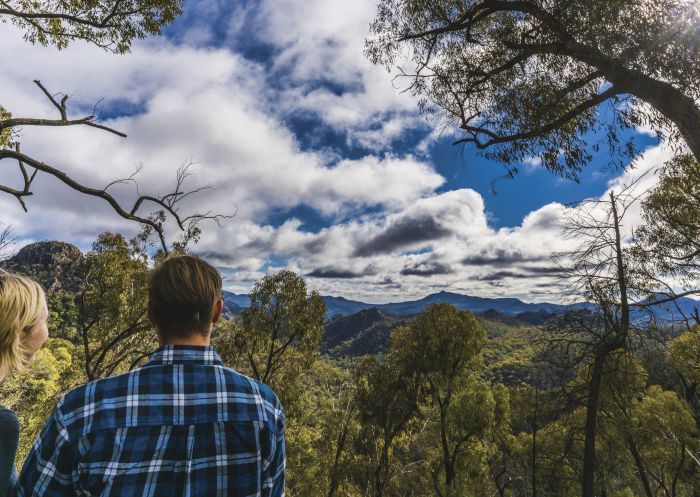
Warrumbungle National Park, Warrumbungle
For a challenging hike that promises amazing vistas, set out on the iconic Breadknife and Grand High Tops Walk. On this 14.5-kilometre looping hike you’ll take in stunning views of volcanic formations like the Breadknife – one of Australia’s most striking rock formations that towers 90 metres above the valley floor. Up above, you may also catch a glimpse of peregrine falcons and wedge-tailed eagles.

Breadknife rock formation, Warrumbungle National Park
Belgourey Split Rock Walking Track is a moderately challenging, 4.6-kilometre looping hike that will see you step foot on an ancient lava dome and climb to the summit of Split Rock, where a huge reward awaits. You’ll soak in spectacular views of Warrumbungle mountain rising out of the volcanic landscape, and the Western Plains stretching off almost infinitely into the distance.

Split Rock walking track, Warrumbungle National Park
At 17 kilometres long, Mount Exmouth Walking Track is a challenging hike, but also immensely rewarding. You’ll conquer the 1,206-metre peak of Mount Exmouth, and on the way, encounter beautiful flora and native wildlife including kangaroos, wallabies, wallaroos and turquoise parrots. The panorama from mountain’s summit makes this hike a must.
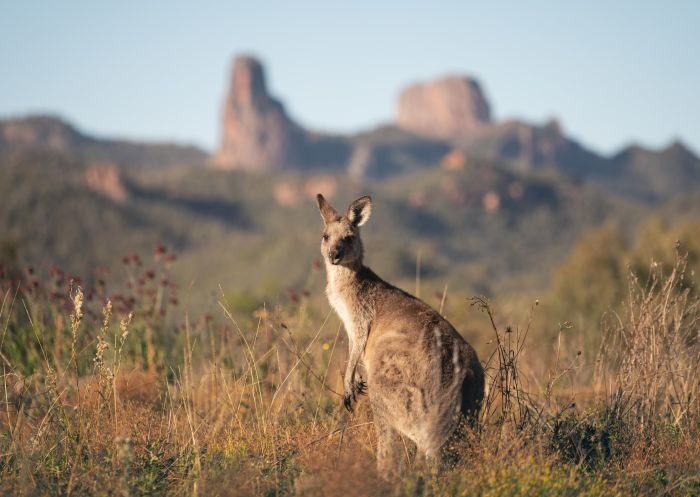
Warrumbungle National Park, Coonabarabran
For a less challenging hike with ample birdwatching opportunities, take the Burbie Canyon Walking Track. It’s a gentle 2-kilometre stroll where you’ll spot peregrine falcons nesting in hollows of the rock-face, and turquoise parrots flying above. This track is perfect for families with kids.
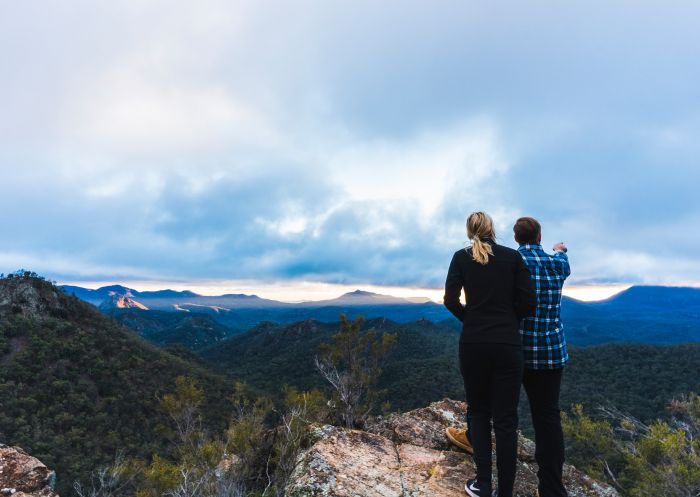
Warrumbungle National Park, Central NSW
This wheelchair-accessible track is just 500 metres long, leading to Whitegum Lookout along a sealed pathway. While there is a slight incline, this track is also perfect for prams and makes for an easy walk for small kids.

Warrumbungle National Park, Warrumbungle
Within the national park, Camp Blackman is a popular base, thanks to facilities that include hot water, picnic tables, drinking water and barbecues for the 105 sites. It’s not only popular with humans – look out for plenty of kangaroos, kookaburras and sulphur-crested cockatoos, too. If you want a more secluded option, try Balor Hut campground, which houses both a historic walkers’ hut and spots for tents. The hut, with its slab bunks, was built between 1958 and 1962, when the network of walking tracks was under construction. It can only be accessed via a 5km hike from the car park.
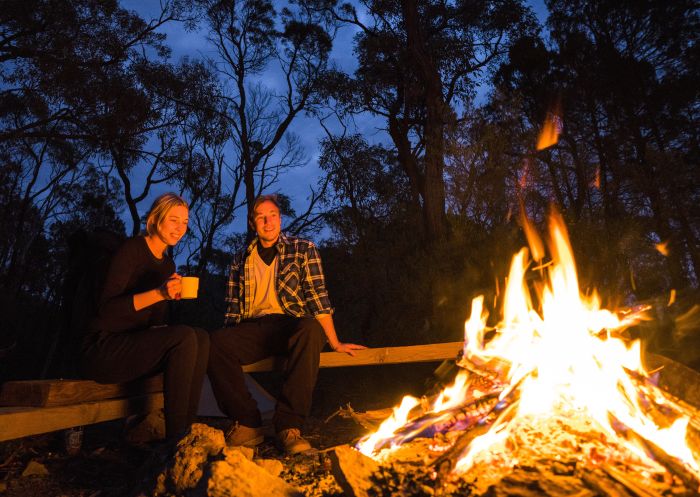
Balor Hut Campground in Warrumbungle National Park, Country NSW
Ogma Gap campground, between Grand High Tops and Mt Exmouth, is another walk-in option if you’re after a real bush-camp experience. No matter which direction you face, you're guaranteed a breath-taking view over the dramatic spires and outcrops that make this park so famous.
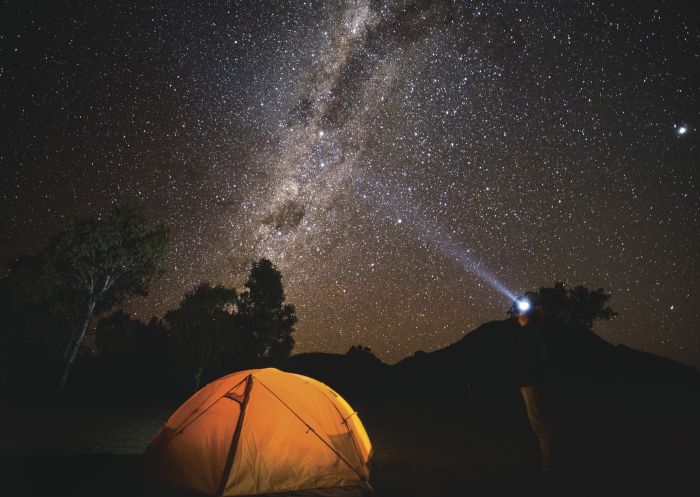
Camping, Warrumbungle National Park
Stay connected to Visit NSW for all the latest news, stories, upcoming events and travel inspiration.
All the insider news, tips and inspiration you need to plan your next trip, delivered straight to your inbox.
Sign UpVisitNSW.com is the official tourism site for Destination NSW.
© Copyright 2025 Destination NSW. All rights reserved